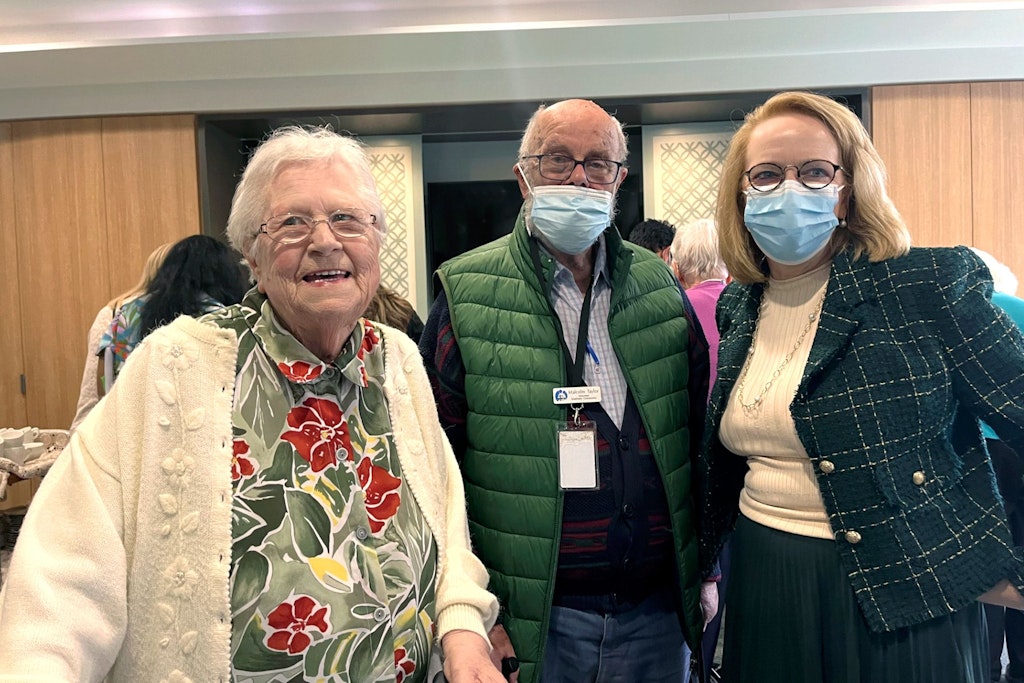Searching for a new model of care, this provider adopted the Montessori approach
Last updated on 14 December 2023

Baptcare, a faith-based not-for-profit residential and community care provider operating across Australia’s southeast, recently made substantial changes to the model of care it uses, introducing Living Well Together (LWT).
Behind the scenes, LWT has been developed in partnership with Monash University’s Health and Social Care Unit, and implemented at the Brookview and Strathalan residential aged care communities. It will eventually be introduced to all of Baptcare’s sites.
Various viewpoints were used to inform and lead the care model’s design, with residents and families at the forefront. Geraldine Lannon, Chief Executive Officer (CEO) Baptcare, told hello leaders they wanted to create an environment where the focus was always centred around the person as opposed to the place and routines.
“Living Well Together is about Baptcare staff working alongside each resident and their family to create an environment that is joyful to the resident, where they can do things that they enjoy and not be required to fit into a completely foreign routine,” Ms Lannon explained.
“We also wanted to make sure that our care is based on evidence and not just a ‘bubble thought’ that will change – like Melbourne weather! This program helps us understand our clients’ stories and what is important to them in the latter years of their life.
“Living Well Together focuses on what matters to residents and what gives their lives meaning and purpose. It also supports staff by defining the tools, resourcing and training they need to best care for all residents,” she added.
Monash University’s presence brought evidence-based insights and high-level monitoring data to the table, all of which will enable them to see what difference the new model of care will make and where it can be refined.
At the core of LWT is the Montessori approach for Dementia and Ageing, promoting the person, existing abilities and hands-on learning. Ms Lannon said residents will be far more engaged in activities they can do, with staff trained to identify and create opportunities for genuine resident involvement and action.
Each residential care community also has a staff ‘Champion’ leading the implementation and providing a link between management, the research team and staff.

“It is personalised and person-centred. It focuses on things that people can do for themselves that bring them not just pleasure but also meaning and purpose. For some residents, this means assisting with setting tables or folding washing, for others it is more purposeful craft work or gardening activities,” she said.
“The model of care enables staff to work alongside residents and to support them to live their fullest lives. The Montessori approach for Dementia and Ageing focuses on the person and the environment, and how the environment can be adapted to promote choice, independence and function.”
Initially it was a focus on strengthening care practices for residents living with dementia or cognitive decline that led to adopting the Montessori approach for Dementia and Ageing. Monash University identified five domains that were key for best practice care, and ultimately, the following domains have been incorporated seamlessly into the holistic model of care:
- Person-centred care
- Dementia-friendly environments
- Workforce training and capacity building
- Integration and coordination
- Clinical care
Associate Professor Darshini Ayton, the lead researcher from Monash University, said LWT’s strength is the fact it isn’t static and it can be easily modified or adapted to suit individual residents.
“This isn’t a single intervention. It’s multiple interventions that have come together and are actually working together. They’re talking to each other,” she said.
“You can see the penny drop with staff. They’ve realised, ‘When I fill out that assessment comprehensively, it helps me design a meaningful activity or purposeful role for that resident. And then that resident goes on and does these things throughout the day, and they’re less bored. Therefore, they have a better quality of life.’”
Although Living Well Together is in its early stages, anecdotal evidence indicates it has been an innovative success for residents. It’s this success that Ms Lannon wants to not only share across all Baptcare settings but also the aged care sector.
“I hope and believe that ultimately we will have a model that will be studied and replicated by other aged care providers. We welcome this collegial sharing because everyone in this sector wants – or should want – excellent outcomes and care for our customers. That is why we do what we do,” she said.